Recycling wood waste is an essential practice that helps reduce environmental impact and promote sustainable resource utilization. Whether from construction, demolition, or household projects, wood waste can be diverted from landfills and repurposed into valuable materials. By understanding how to properly recycle wood, you can contribute to a cleaner environment, minimize waste, and even support the circular economy.
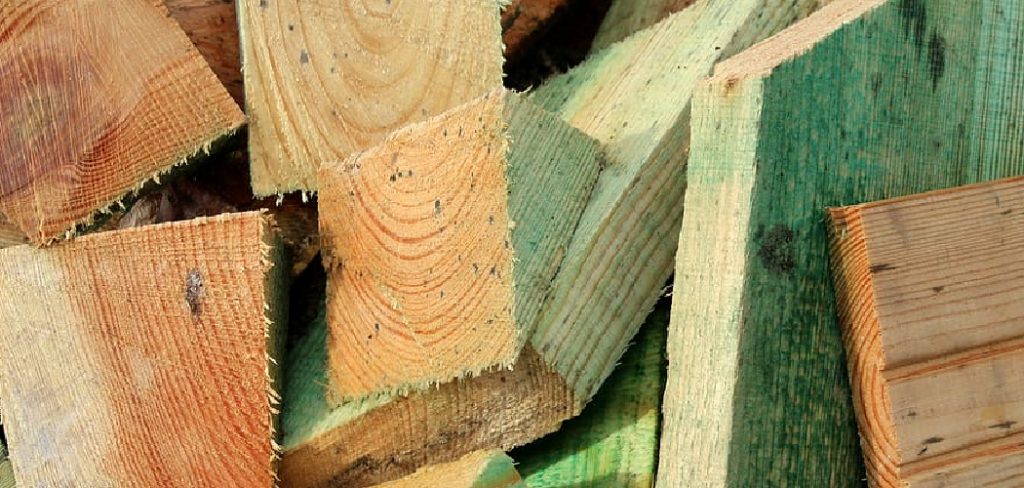
This guide on how to recycle wood waste will provide an overview of the importance of wood recycling, methods for identifying recyclable wood, and steps to maximize its reuse.
Why is Wood Recycling Important?
Wood recycling plays a critical role in reducing environmental impact, conserving resources, and mitigating climate change. By diverting wood waste from landfills, we can significantly lower greenhouse gas emissions, particularly methane, which is released as wood decomposes in these sites.
Additionally, recycling wood helps to conserve natural forests by reducing the need for virgin wood harvesting, preserving ecosystems and biodiversity. It also supports the circular economy by transforming discarded wood into valuable products such as mulch, particleboard, or bioenergy. Ultimately, wood recycling not only minimizes waste but also promotes sustainable practices that benefit both the planet and future generations.
Needed Materials
- Wood Waste
- Recycling Facilities/centers
- Collection Trucks/vans
- Processing Equipment (E.g., Chippers, Grinders)
- Personnel Trained in Wood Recycling Techniques
- Markets for Recycled Wood Products
7 Steps on How to Recycle Wood Waste
Step 1: Segregate Wood Waste
The first step in recycling wood waste is to segregate it properly. Collect and sort wood waste into different categories, such as untreated wood, treated wood, and composite materials. This ensures that each type of wood is processed correctly and prevents contamination during recycling.
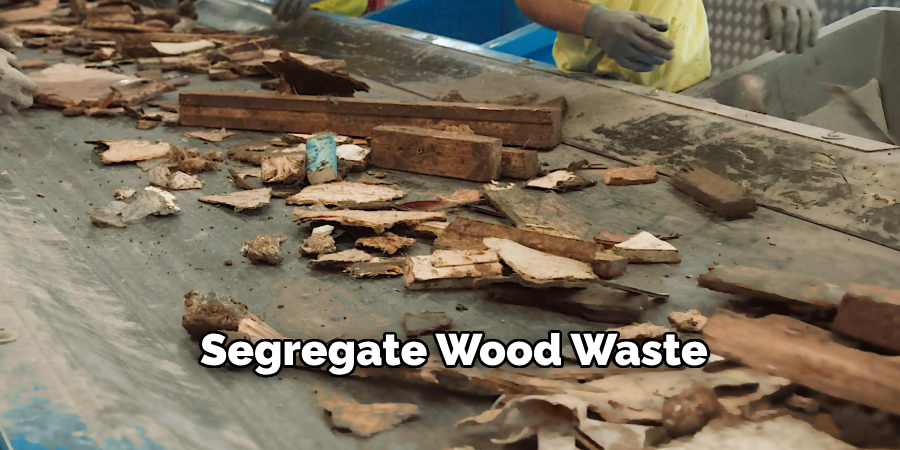
Proper segregation also helps identify reusable pieces, minimizing both waste and environmental impact. The more thoroughly you sort your wood waste, the easier it will be to recycle.
Step 2: Remove Nails and Screws
Before recycling any wood waste, make sure to remove all nails, screws, or other hardware from the wood pieces.
These metal items can damage machinery during the recycling process and reduce the quality of the recycled material. Use a hammer or pliers to remove these fasteners before sending the wood for recycling.
Step 3: Check for Toxic Materials
Inspect the wood for any toxic materials, such as paint, stains, or chemicals that could be harmful during the recycling process. Treated wood, like timber coated with preservatives or finishes, is often not suitable for recycling due to the potential release of hazardous substances.
Separate treated or contaminated wood from clean wood waste to ensure the safety and effectiveness of the recycling effort. If you’re uncertain whether the wood is treated, consult with a recycling facility for guidance.
Step 4: Sorting and Preparing for Recycling
After thoroughly inspecting the wood waste, it’s time to sort and prepare it for recycling. This step is crucial in ensuring that the materials are properly recycled and not contaminated by other materials.
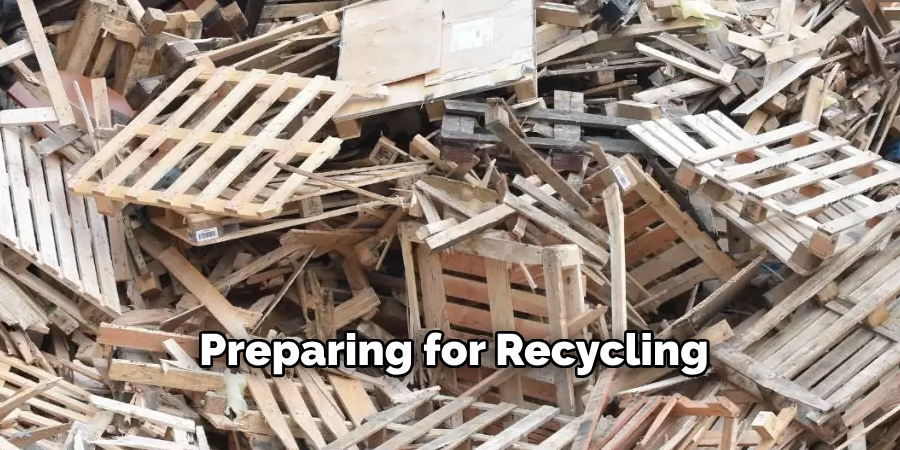
Separate different types of wood waste, such as lumber, pallets, and furniture pieces. This will make it easier for the recycling facility to process the materials accordingly. You can also use this opportunity to remove any remaining nails or hardware that may be attached to the wood.
Step 5: Shredding and Grinding
Once the wood waste is sorted, it’s time to shred and grind it into smaller pieces. This process not only makes the materials easier to handle but also helps create a more uniform product for recycling.
The shredded wood waste can then be used for various purposes such as mulch, animal bedding, or fuel for biomass power plants. Additionally, some companies may use the material to make new products such as composite decking or particleboard.
Step 6: Repurposing or Upcycling
In addition to recycling, there are also opportunities for repurposing or upcycling wood waste. Repurposing involves taking old wooden items and giving them a new purpose or function. This can include turning old wooden pallets into furniture or using reclaimed wood for home decor projects.
Upcycling, on the other hand, involves taking discarded materials and transforming them into higher-quality products. For example, small pieces of scrap wood can be turned into beautiful cutting boards or coasters. This not only reduces waste but also adds value to the material.
Repurposing and upcycling are great options for reducing wood waste and promoting sustainability. They require creativity and innovation to find new uses for old materials and can even provide a source of income for individuals or businesses.
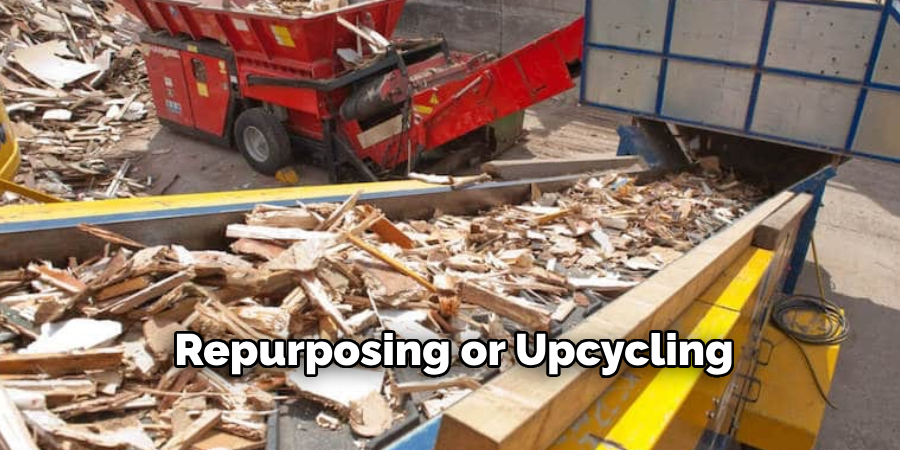
Step 7: Proper Disposal
If recycling, repurposing, or upcycling is not possible, it is important to properly dispose of wood waste. This includes separating treated and untreated wood, as well as any hazardous materials attached to the wood.
Treated wood, such as pressure-treated or painted wood, should never be burned or composted as it can release harmful chemicals into the air or soil. It should be taken to a designated disposal facility that can handle hazardous materials. Untreated wood can be disposed of through curbside pickup or at a local recycling center. Some communities also offer yard waste collection where small amounts of wood waste can be safely disposed of alongside other organic materials like leaves and grass clippings.
Following these proper disposal methods on how to recycle wood waste not only ensures the safety of yourself and others but also helps protect the environment. Burning or improperly disposing of wood waste can contribute to air pollution and harm wildlife.
Additional Tips
Consider Repurposing:
Before disposing of wood waste, think about ways it can be reused. Old wood can be transformed into DIY furniture, garden planters, or decorative items. This not only helps reduce waste but also allows you to get creative and save money.
Compost It:
If the wood is untreated, it can be composted along with other organic materials. This results in nutrient-rich soil that can be used in gardens and flower beds.
Donate It:
Wood waste like old furniture or building materials may still have some use left in them. Consider donating these items to local charities or organizations for reuse rather than throwing them away.
Find a Recycling Center:
Many cities have recycling centers that accept wood waste for proper disposal. Check with your local waste management department for information on where to take your wood waste.
By following these tips, you can properly dispose of wood waste and do your part in reducing landfill waste. Additionally, consider using alternative materials or finding creative ways to reuse wood in order to reduce the amount of waste produced in the first place. Together, we can make a positive impact on our environment and promote sustainable practices for future generations. So, let’s be mindful when it comes to disposing of wood and strive towards a greener, cleaner planet.
Do You Need to Use Professionals?
When it comes to managing wood waste, you might wonder if hiring professionals is necessary. The answer largely depends on the scale and nature of the wood waste you are dealing with. For small projects or household wood waste, you may be able to manage disposal or repurposing on your own with some effort. However, for larger projects such as construction or demolition, involving a professional wood waste disposal service can be highly beneficial.
Professionals ensure that wood is disposed of responsibly, recycled where possible, and handled in compliance with local regulations. Additionally, they have the tools and expertise to manage large quantities of waste efficiently, saving you time and effort. Whether you choose to manage it yourself or seek professional help, it’s essential to prioritize environmentally friendly practices. Exploring waste wood craft ideas is a creative and sustainable way to turn scrap materials into beautiful and functional home décor.
Frequently Asked Questions
Q: Can I Recycle All Types of Wood Waste?
A: No, some types of treated or painted wood may not be accepted for recycling. Check with your local recycling center for specific guidelines. The general rule is that clean wood waste, such as branches, logs, and pallets, can be recycled.
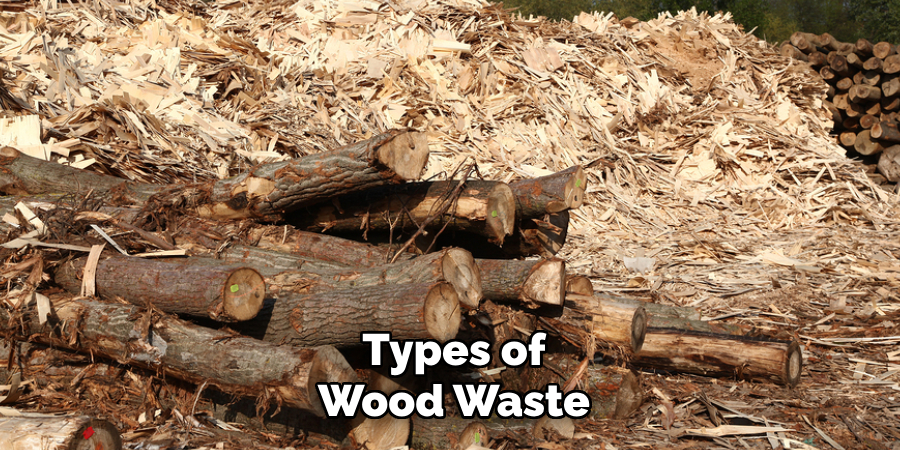
Q: Can I Just Leave Wood Waste in My Yard?
A: Leaving wood waste in your yard can attract pests and create a potential fire hazard. It’s best to dispose of it properly or use it for mulch or composting.
Q: How Can I Reuse Wood Waste Around My Home?
A: There are many ways to reuse wood waste around your home. You can use small pieces of wood as kindling for fires, create garden markers or labels, make birdhouses or other craft projects, and even build furniture or home decor items.
Q: What Are Some Creative Ways to Use Wood Waste in My Garden?
A: Wood waste can be used creatively in your garden as mulch, pathway edging, raised bed borders, and even as planters or trellises. You can also use larger pieces of wood to create unique garden structures such as a pergola or arbor.
Q: What Are Some Crafts I Can Make with Wood Waste?
A: The possibilities are endless when it comes to crafting with wood waste. Some ideas include creating coasters, picture frames, candleholders, keychains, and even jewelry. You can also use wood scraps to make small shelves or decorative wall hangings.
Conclusion
Repurposing wood waste not only helps reduce environmental impact but also offers endless creative opportunities for your home and garden. From practical uses like kindling and mulch to decorative projects such as crafting furniture and building garden structures, wood waste can be transformed into valuable and functional items.
By finding innovative ways to repurpose this material, you contribute to sustainability while adding character and charm to your surroundings. Thanks for reading this article on how to recycle wood waste.
About the Author
Adrian Green, a lifelong woodworking enthusiast, shares his passion for the craft through The Woodenify Blog. With a foundation built on years of hands-on experience in his father’s woodworking shop, Adrian is dedicated to helping others learn and grow in the world of DIY woodworking. His approach to woodworking combines creativity, practicality, and a deep appreciation for the art of building with your own hands. Through his blog, he inspires individuals of all skill levels to embark on their own woodworking journeys, creating beautiful, functional pieces of furniture and décor.
Professional Focus
- Specializes in DIY woodworking projects, from furniture to home décor.
- Provides step-by-step guides and practical tutorials for woodworkers of all skill levels.
- Dedicated to helping readers build confidence and skill through easy-to-follow instructions and tips.
- Passionate about fostering a community of makers who can share, learn, and grow together.
Education History
- University of Craft and Design – Bachelor of Fine Arts (BFA) in Woodworking and Furniture Design
- Woodworking Apprenticeships – Extensive hands-on training with skilled craftsmen to refine carpentry and furniture making techniques.
- Online Courses & Masterclasses – Continued education in advanced woodworking techniques, design principles, and specialized tools
Expertise:
- DIY woodworking, carpentry, furniture making, and home décor projects.
- Creating accessible tutorials and guides for beginner to advanced woodworkers.
- Sharing the joys and satisfaction of woodworking, from raw materials to finished products.
